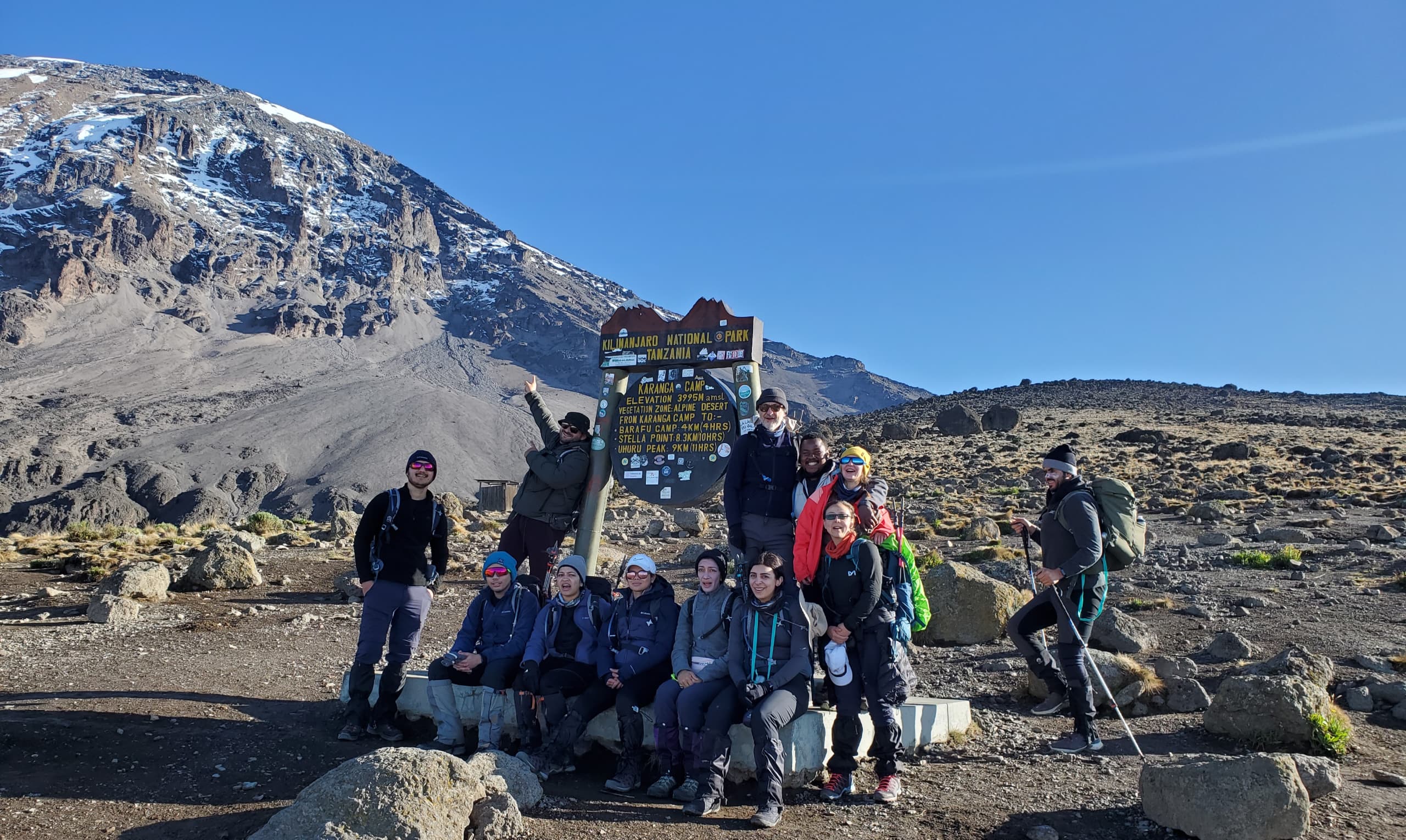Authentic Tanzania Cultural Tours: Discover the Diverse Tribes and Traditions of East Africa
Blog

Climbing Mount Kilimanjaro, Africa’s highest peak and the world’s tallest free-standing mountain, is a life-changing adventure. However, the climb comes with its challenges. While it requires no technical climbing skills, the trek demands physical endurance, mental strength, and proper preparation to overcome its difficulties.
At Incredible Africa Adventures, we are here to help you understand the challenges of climbing Kilimanjaro, prepare for them, and ultimately conquer the Roof of Africa.
Is Climbing Kilimanjaro Difficult?
The difficulty of climbing Mount Kilimanjaro largely depends on your chosen route, level of fitness, acclimatization ability, and mental determination. The trek involves hiking through diverse terrains, from lush rainforests to arctic conditions at the summit.
Key Factors Contributing to Kilimanjaro’s Difficulty
1. Altitude and Acclimatization
High Altitude: Kilimanjaro’s summit, Uhuru Peak, stands at 5,895 meters (19,341 feet). At this height, reduced oxygen levels can cause altitude sickness.
Acclimatization: Proper acclimatization is essential to allow your body to adjust to the thinning air. Choosing a longer route with gradual ascents, such as the Lemosho or Northern Circuit routes, improves your chances of success.
2. Physical Fitness
While no technical climbing skills are required, trekkers should have a good level of cardiovascular fitness, strength, and endurance.
Training with activities such as hiking, cycling, and stair climbing can significantly prepare you for the trek.
3. Weather and Temperature
Kilimanjaro’s weather varies drastically as you ascend through its five climatic zones, ranging from tropical rainforests to freezing summit temperatures.
Summit night is particularly challenging, with temperatures dropping as low as -20°C (-4°F).
4. Route Selection
The difficulty of your climb also depends on the route you choose. For example:
5. Mental Strength
Beyond physical readiness, mental resilience is key to overcoming fatigue, altitude challenges, and the monotony of long trekking days.
How to Overcome the Challenges of Climbing Kilimanjaro?
1. Choose the Right Route
Opt for routes with longer durations to improve acclimatization and success rates, such as the Lemosho or Northern Circuit routes.
2. Train in Advance
Start training at least two months before your climb. Focus on:
>Cardiovascular fitness (running, swimming, or cycling).
>Leg and core strength (squats, lunges, and planks).
>Endurance hikes with a weighted backpack.
3. Pack the Right Gear, Essential items include:
>Layered clothing for varying temperatures.
>Insulated sleeping bag rated for sub-zero temperatures.
>Trekking poles to reduce strain on your knees.
>Sturdy, waterproof hiking boots.
4. Follow a Slow and Steady Pace
"Pole, Pole" (Swahili for "slowly, slowly") is the golden rule of Kilimanjaro climbing. Taking it slow allows your body to adjust and conserves energy for summit night.
5. Stay Hydrated and Eat Well
Drinking at least 3–4 liters of water daily and eating energy-rich meals is vital to maintain stamina and reduce altitude sickness symptoms.
6. Rely on Expert Guides
Climbing with experienced, certified guides like those at Incredible Africa Adventures ensures safety, encouragement, and invaluable knowledge about the mountain.
Kilimanjaro Routes and Their Difficulty Levels
1. Marangu Route (5–6 days):
Difficulty: Moderate
Features: Shorter route with hut accommodations but less time for acclimatization.
2. Machame Route (6–7 days):
Difficulty: Challenging
Features: Scenic and popular, with steeper ascents.
3. Lemosho Route (7–8 days):
Difficulty: Moderate to Challenging
Features: Longer route with excellent acclimatization and fewer crowds.
4. Northern Circuit Route (9 days):
Difficulty: Moderate
Features: Longest route, offering the best acclimatization and incredible views.
5. Rongai Route (6–7 days):
Difficulty: Moderate
Features: Approaches from the north, quieter and less crowded.
6. Umbwe Route (5–6 days):
Difficulty: Very Challenging
Features: Steep and direct, ideal for experienced trekkers.
What Makes Incredible Africa Adventures the Best Choice?
1. Experienced Guides
Our certified guides are trained in high-altitude trekking and first aid, ensuring your safety and success.
2. Personalized Itineraries
We customize routes and plans to match your fitness level, preferences, and schedule.
3. High-Quality Equipment
Enjoy durable tents, comfortable sleeping gear, and freshly prepared meals throughout your climb.
4. Ethical and Sustainable Practices
We uphold fair treatment for our porters and crew and promote eco-friendly tourism practices.
5. Proven Success Rates
With expert guidance, comprehensive preparation, and attention to detail, we ensure high success rates for climbers.
FAQs About Kilimanjaro Climbing Difficulty
1. Can beginners climb Kilimanjaro?
Yes! Kilimanjaro requires no technical climbing skills, making it accessible to beginners with proper preparation and the right route.
2. What’s the success rate for Kilimanjaro climbs?
Success rates vary by route, with longer routes like Lemosho and Northern Circuit offering up to 90% success due to better acclimatization.
3. How can I avoid altitude sickness?
Climb slowly, stay hydrated, and choose a longer route to allow your body to acclimatize.
Make Your Kilimanjaro Dream a Reality with Incredible Africa Adventures
Climbing Mount Kilimanjaro is a challenge, but it’s one that’s within your reach with the right preparation and guidance. At Incredible Africa Adventures, we ensure your journey is safe, enjoyable, and rewarding. Let us guide you to the Roof of Africa while creating unforgettable memories. Contact us today to start planning your Kilimanjaro adventure!
Drop us a line. Our Safari experts will answer all your questions in 24 hours